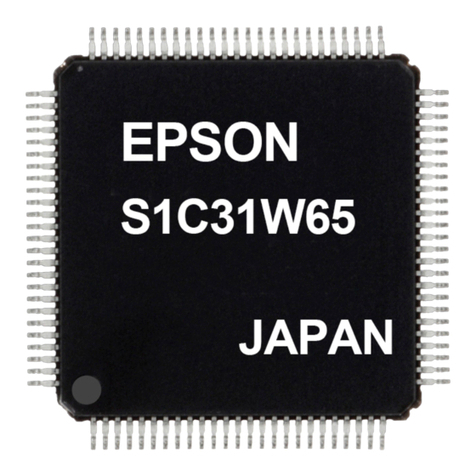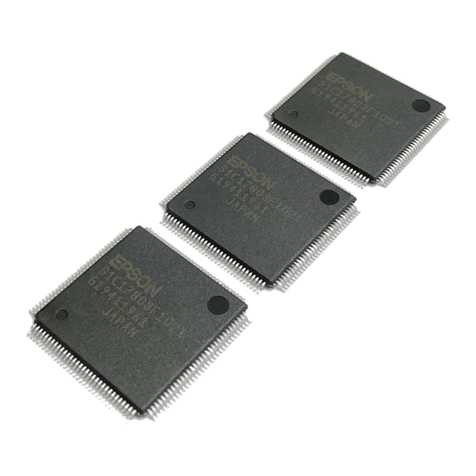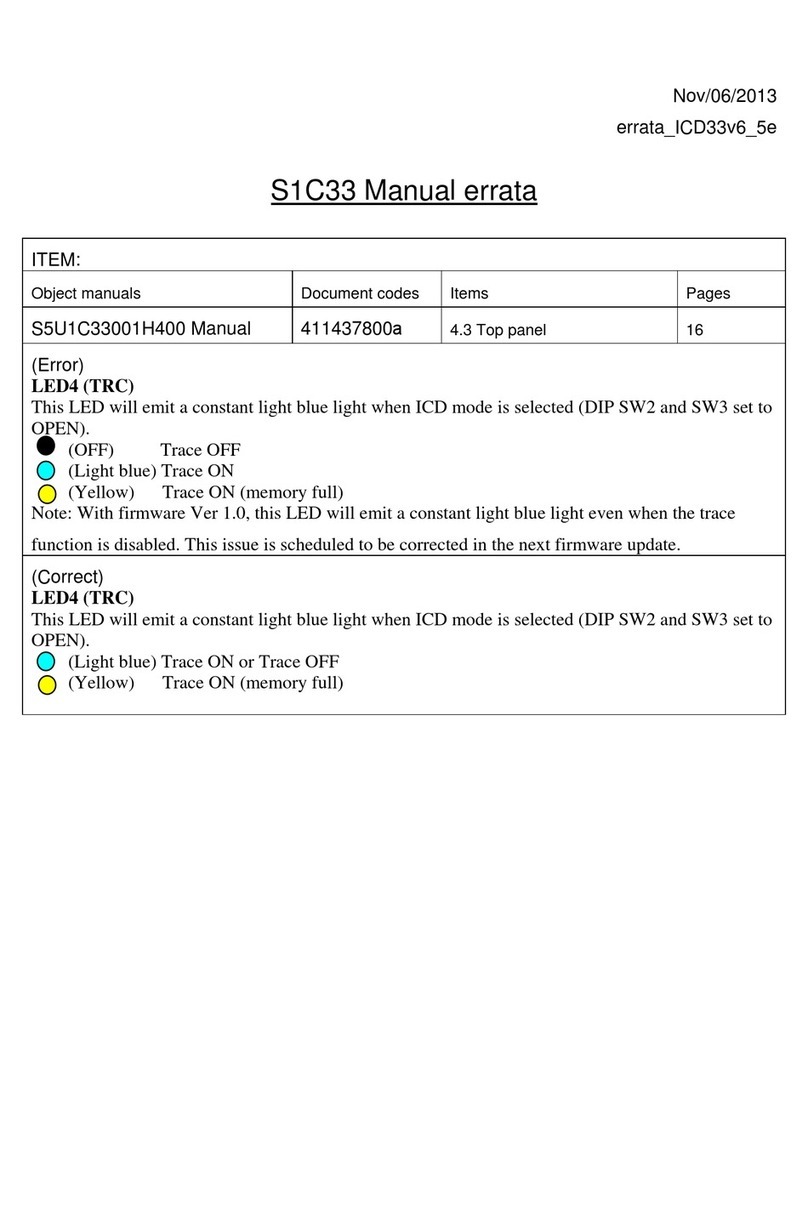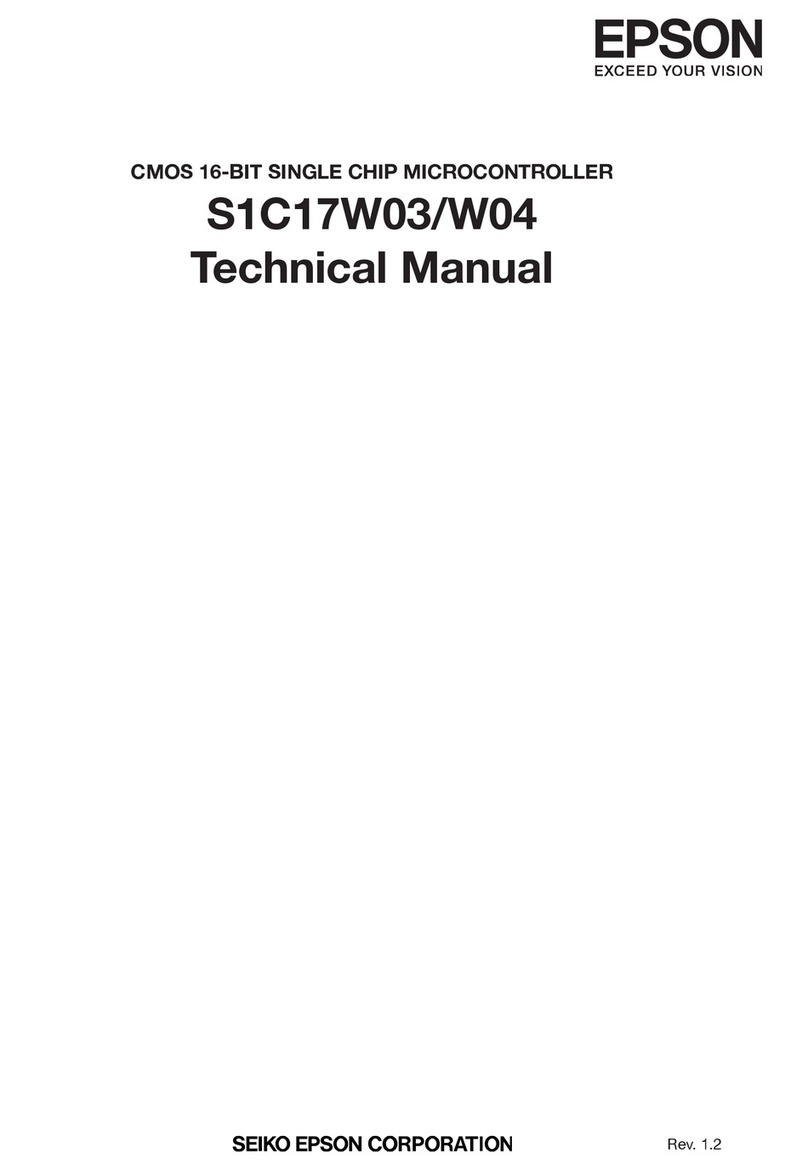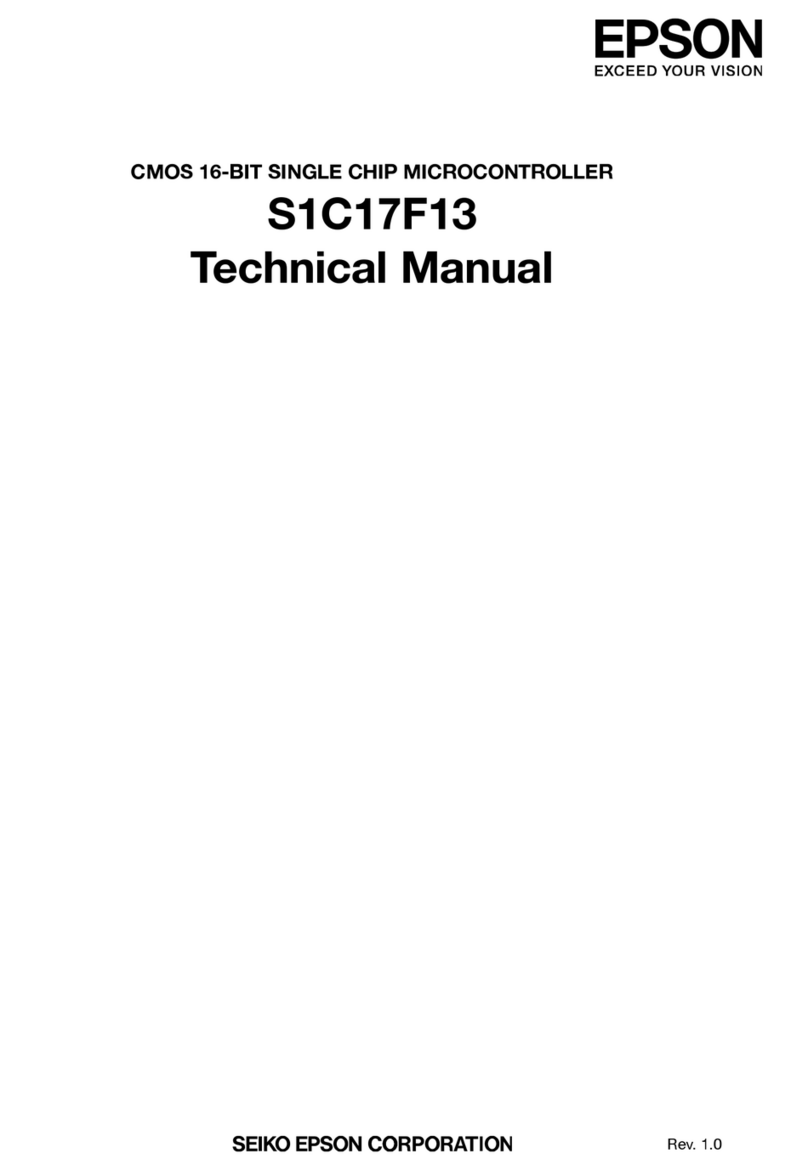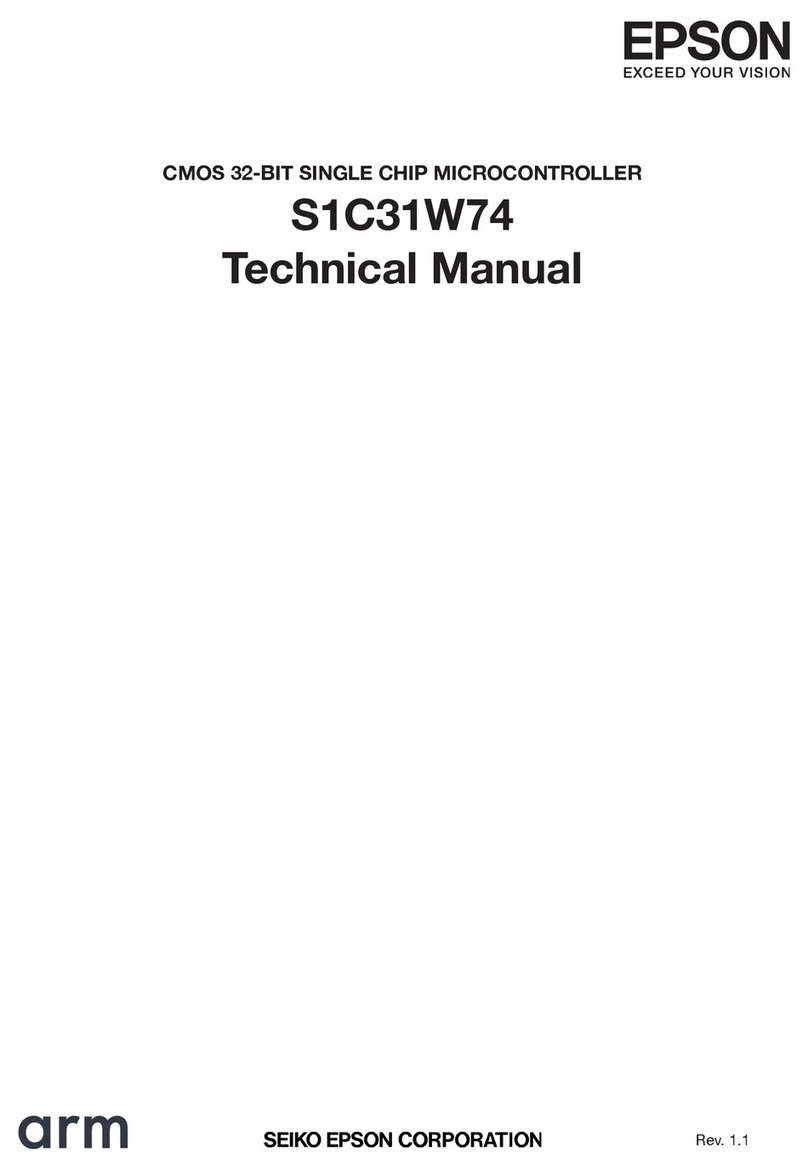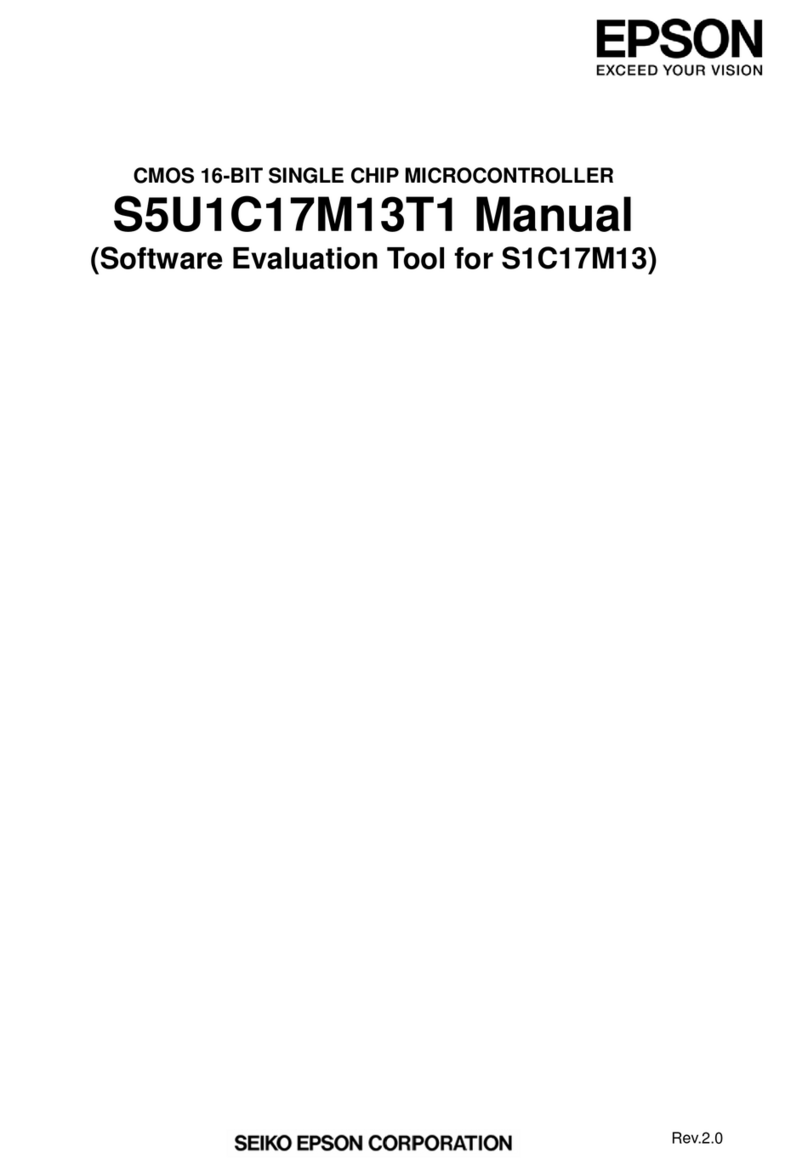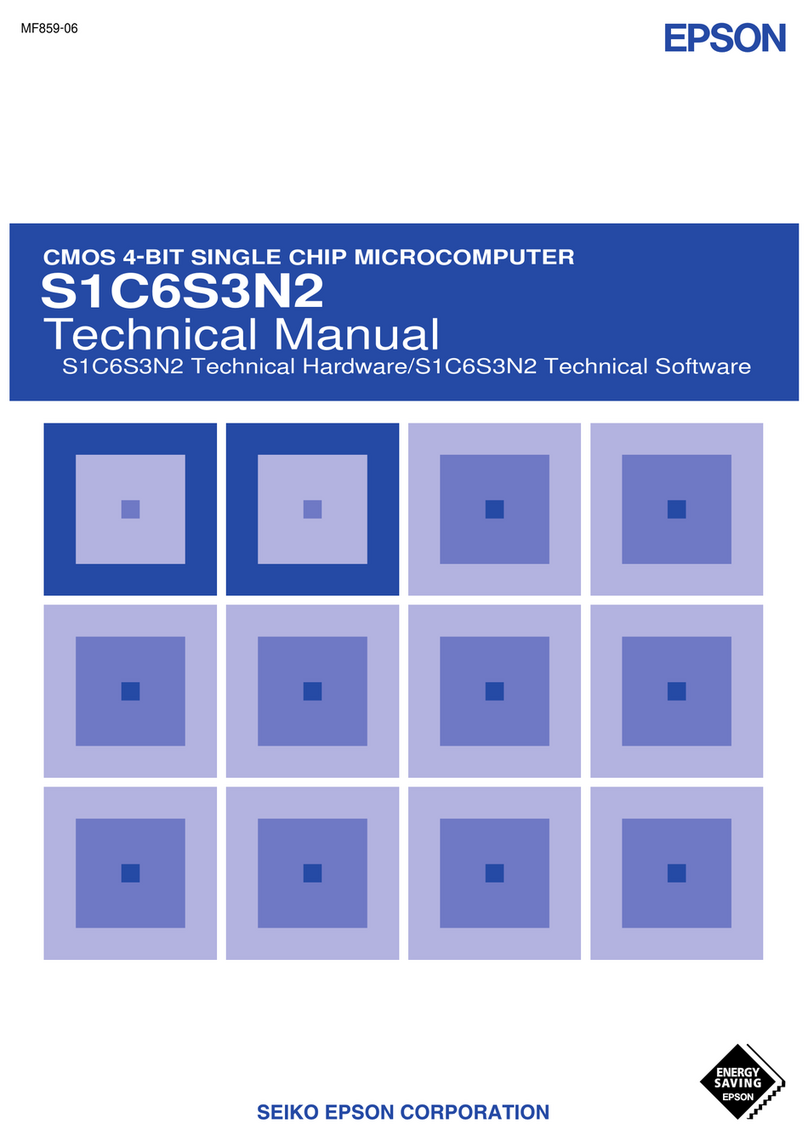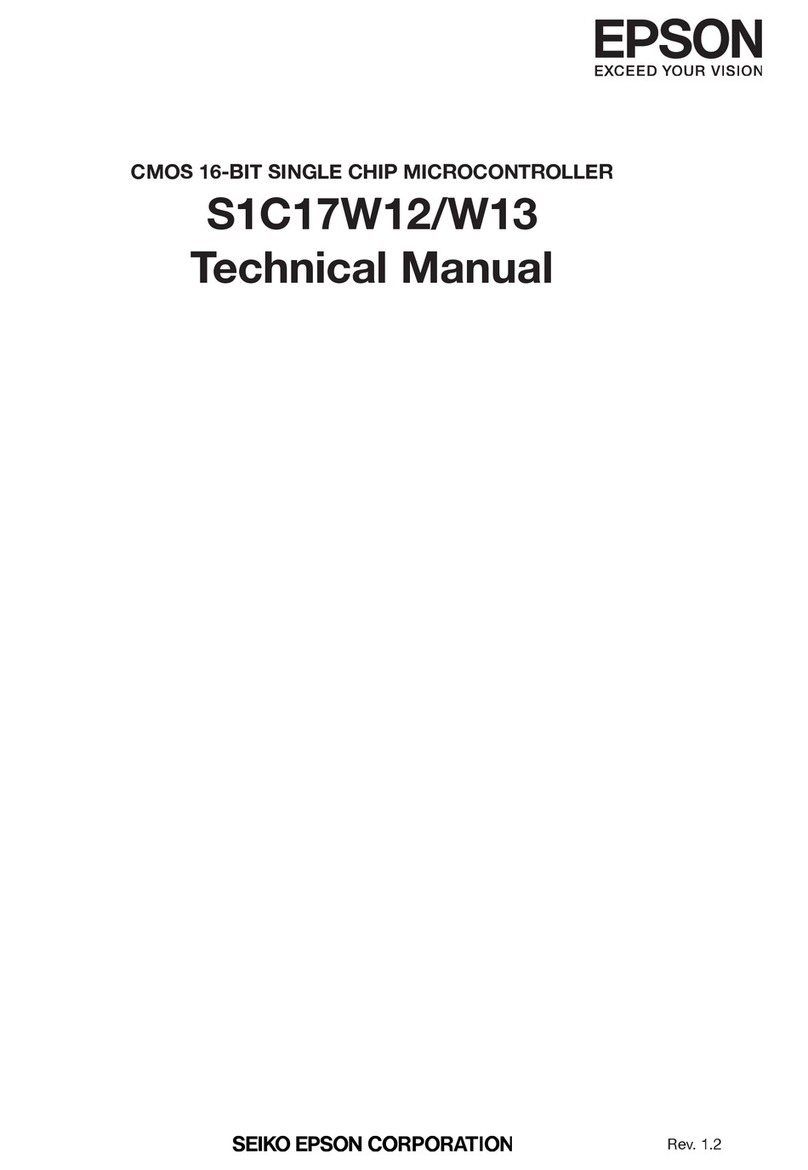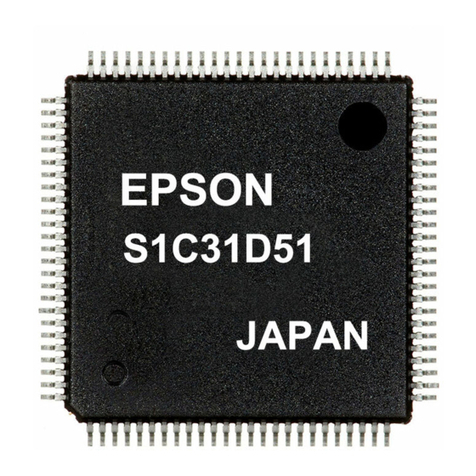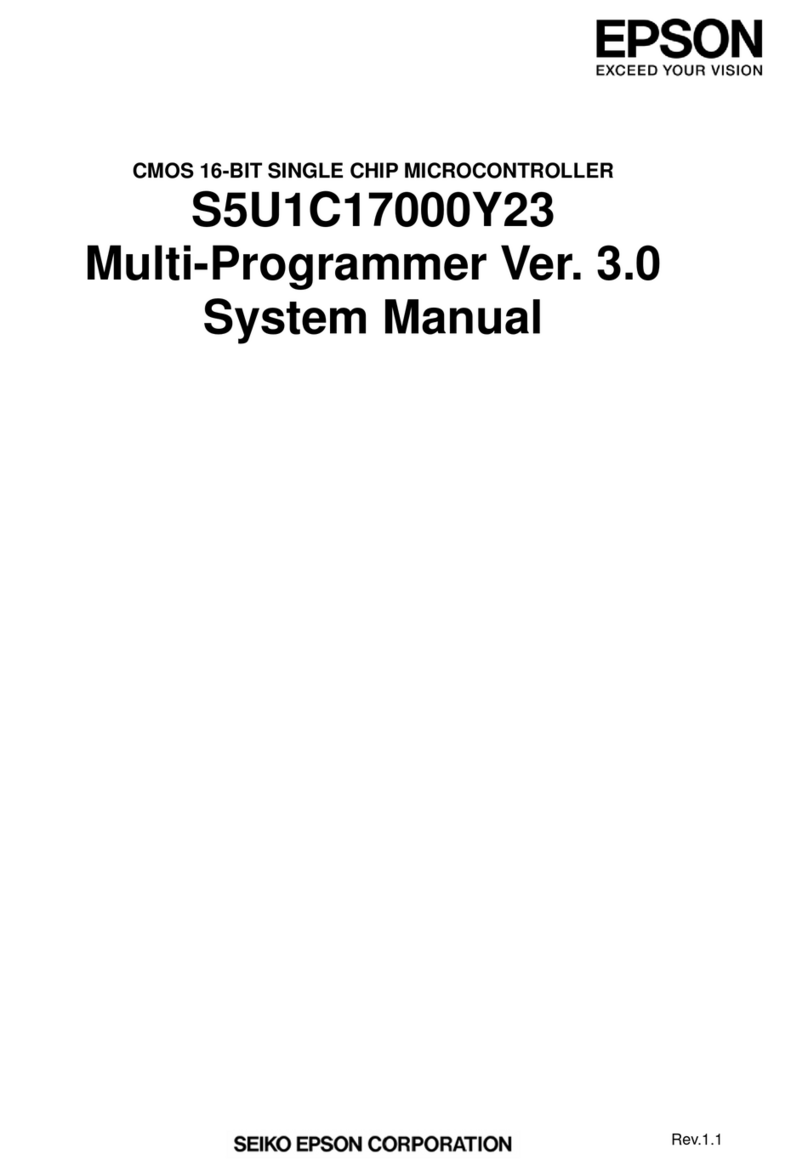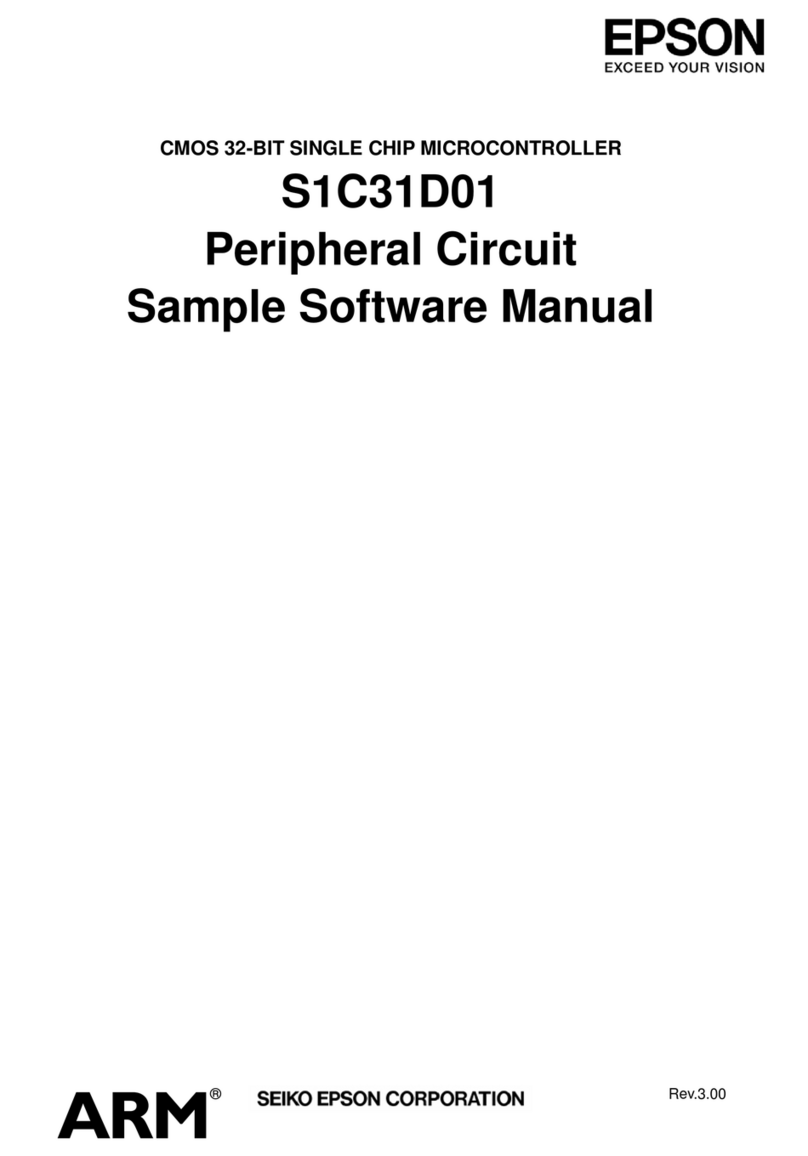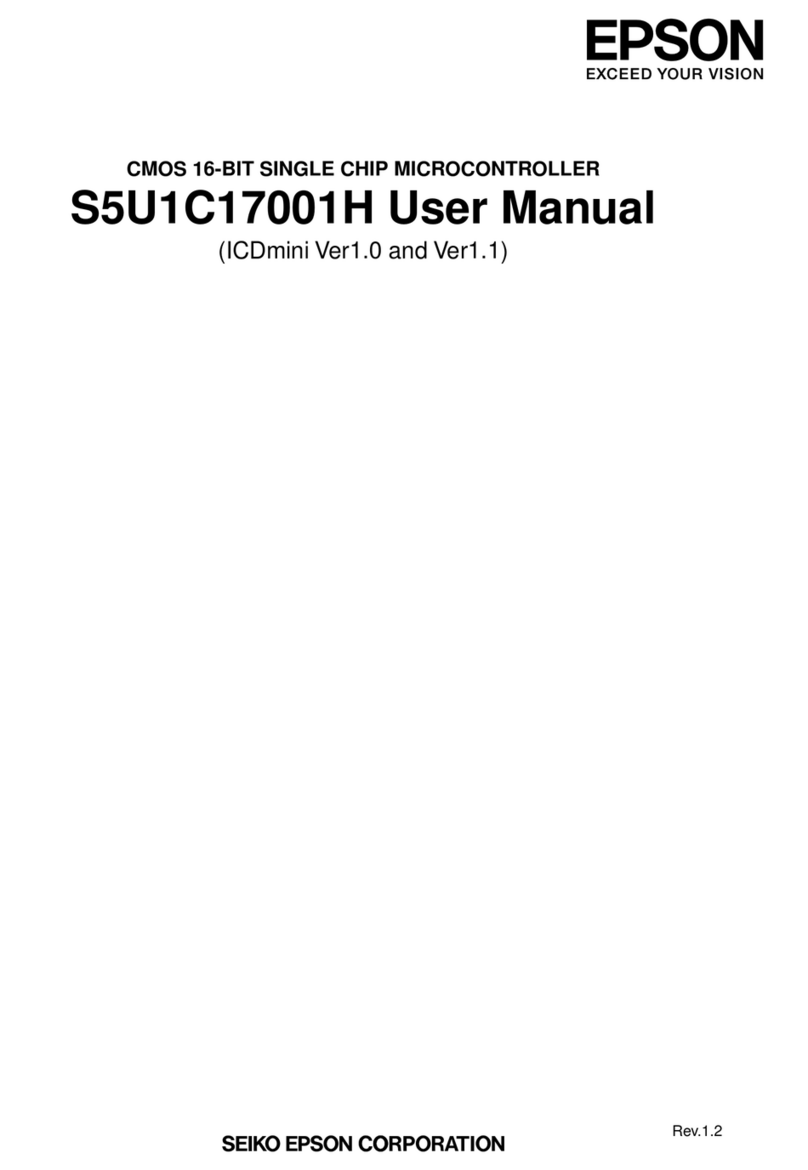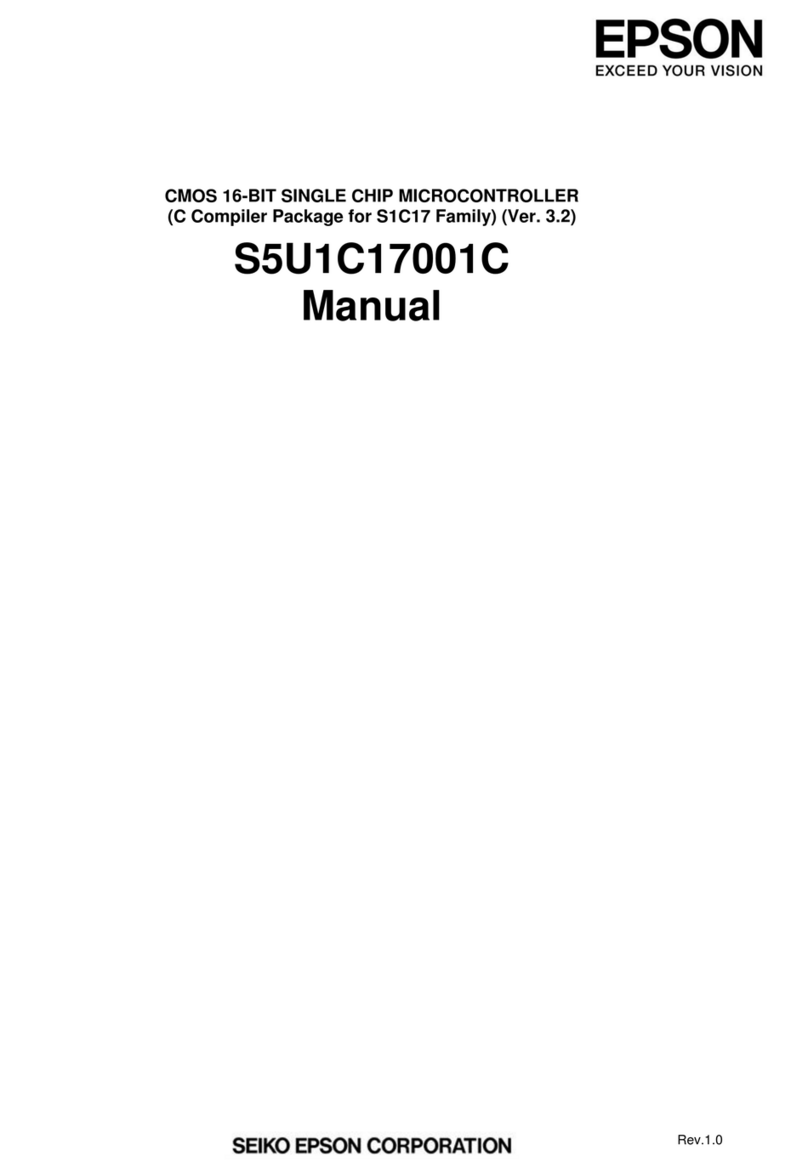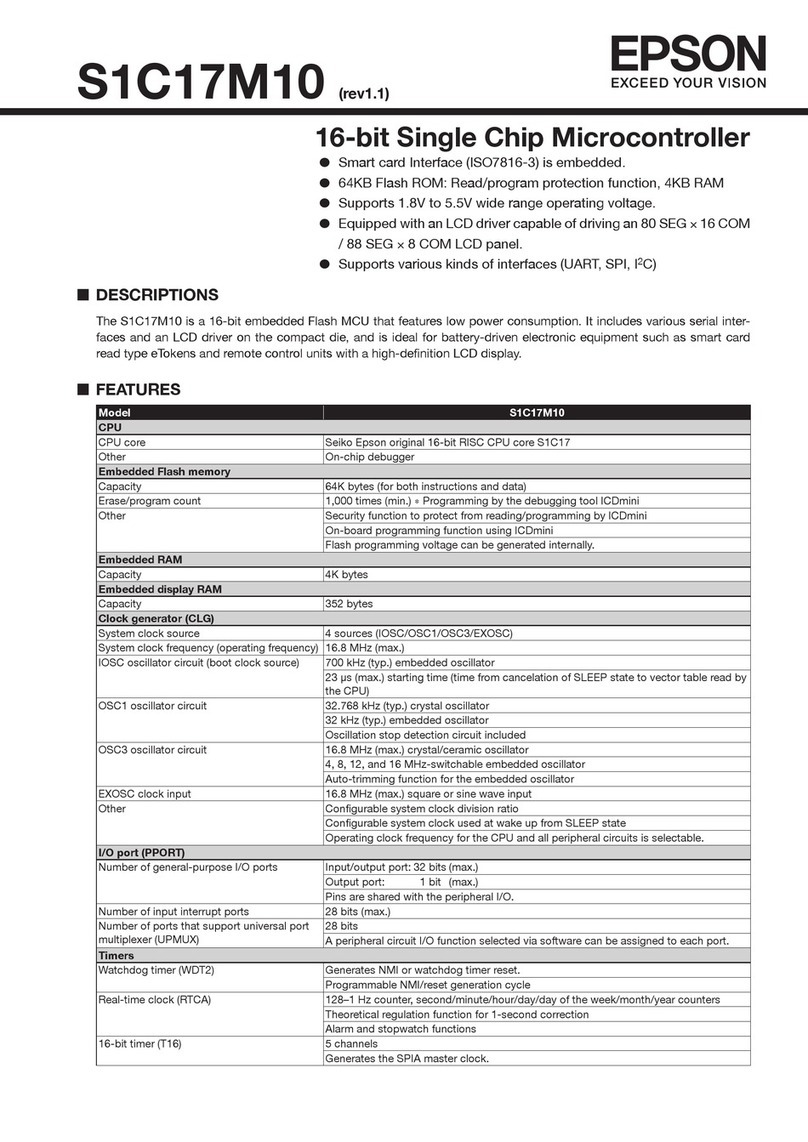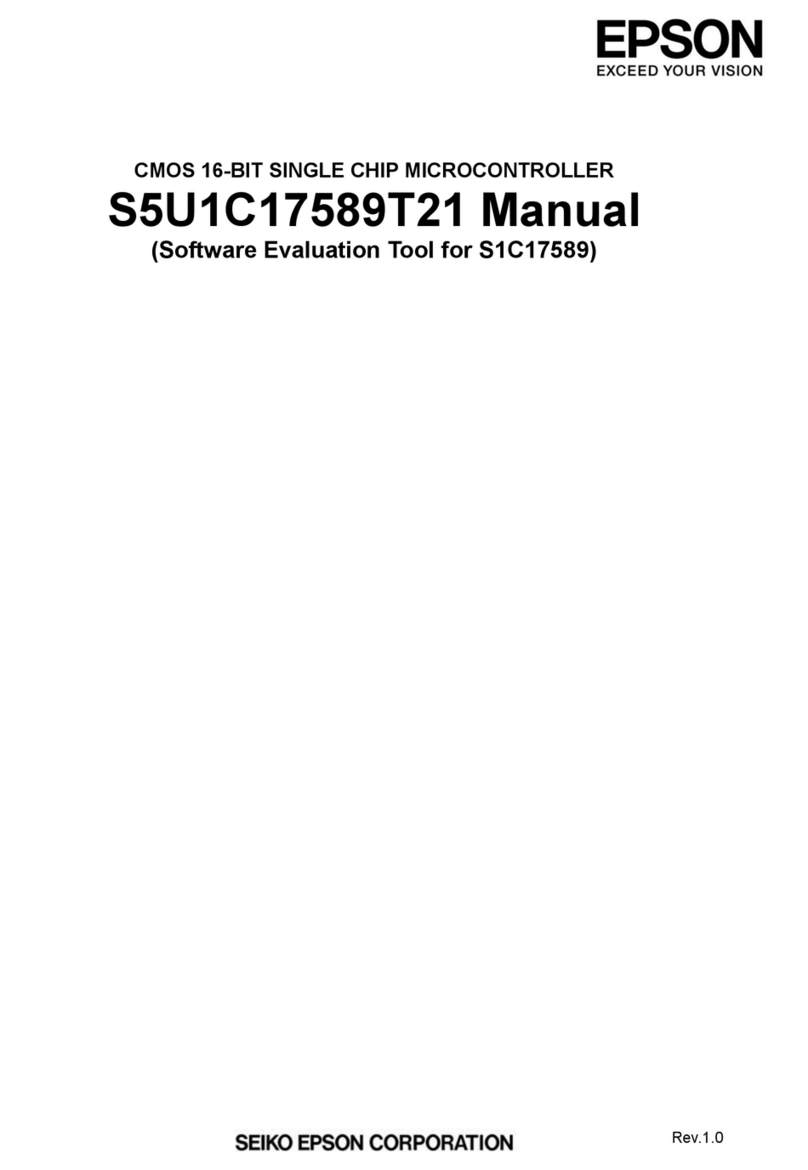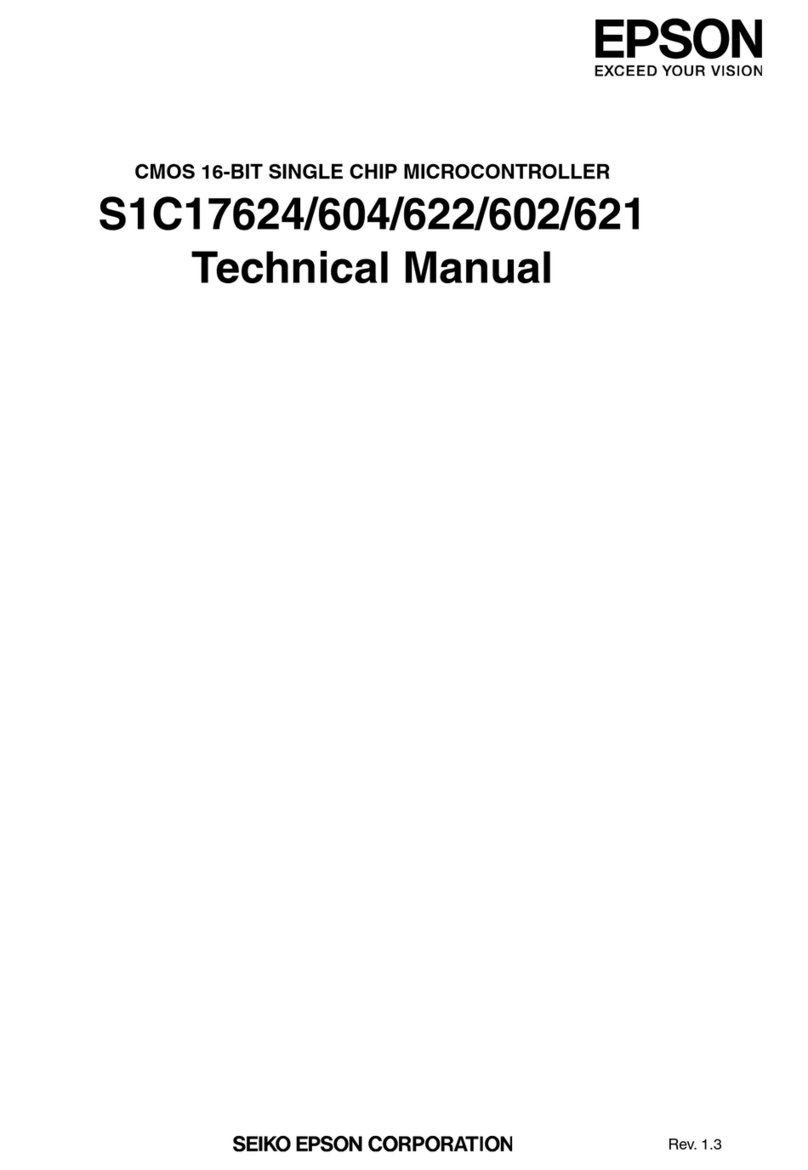
CONTENTS
S1C17W18 TECHNICAL MANUAL Seiko Epson Corporation v
(Rev. 1.2)
9.4.3 Stopwatch Control............................................................................................ 9-4
9.4.4 Stopwatch Count-up Pattern ........................................................................... 9-4
9.5 Interrupts......................................................................................................................... 9-5
9.6 Control Registers ............................................................................................................ 9-6
RTC Control Register ................................................................................................................ 9-6
RTC Second Alarm Register ..................................................................................................... 9-7
RTC Hour/Minute Alarm Register.............................................................................................. 9-8
RTC Stopwatch Control Register .............................................................................................. 9-8
RTC Second/1Hz Register ........................................................................................................ 9-9
RTC Hour/Minute Register ....................................................................................................... 9-10
RTC Month/Day Register ......................................................................................................... 9-11
RTC Year/Week Register .......................................................................................................... 9-11
RTC Interrupt Flag Register...................................................................................................... 9-12
RTC Interrupt Enable Register ................................................................................................. 9-13
10 Supply Voltage Detector (SVD).................................................................................10-1
10.1 Overview ...................................................................................................................... 10-1
10.2 Input Pin and External Connection .............................................................................. 10-2
10.2.1 Input Pin......................................................................................................... 10-2
10.2.2 External Connection ...................................................................................... 10-2
10.3 Clock Settings.............................................................................................................. 10-2
10.3.1 SVD Operating Clock..................................................................................... 10-2
10.3.2 Clock Supply in SLEEP Mode ....................................................................... 10-2
10.3.3 Clock Supply in DEBUG Mode...................................................................... 10-3
10.4 Operations ................................................................................................................... 10-3
10.4.1 SVD Control ................................................................................................... 10-3
10.4.2 SVD Operations ............................................................................................. 10-4
10.5 SVD Interrupt and Reset .............................................................................................. 10-4
10.5.1 SVD Interrupt ................................................................................................. 10-4
10.5.2 SVD Reset...................................................................................................... 10-5
10.6 Control Registers ......................................................................................................... 10-5
SVD Clock Control Register ..................................................................................................... 10-5
SVD Control Register ............................................................................................................... 10-6
SVD Status and Interrupt Flag Register ................................................................................... 10-7
SVD Interrupt Enable Register ................................................................................................. 10-8
11 16-bit Timers (T16).....................................................................................................11-1
11.1 Overview ...................................................................................................................... 11-1
11.2 Input Pin....................................................................................................................... 11-1
11.3 Clock Settings.............................................................................................................. 11-2
11.3.1 T16 Operating Clock...................................................................................... 11-2
11.3.2 Clock Supply in SLEEP Mode ....................................................................... 11-2
11.3.3 Clock Supply in DEBUG Mode...................................................................... 11-2
11.3.4 Event Counter Clock...................................................................................... 11-2
11.4 Operations ................................................................................................................... 11-2
11.4.1 Initialization .................................................................................................... 11-2
11.4.2 Counter Underflow ........................................................................................ 11-3
11.4.3 Operations in Repeat Mode........................................................................... 11-3
11.4.4 Operations in One-shot Mode ....................................................................... 11-3
11.4.5 Counter Value Read....................................................................................... 11-4
11.5 Interrupt........................................................................................................................ 11-4
11.6 Control Registers ......................................................................................................... 11-4
T16 Ch.nClock Control Register ............................................................................................. 11-4
T16 Ch.nMode Register .......................................................................................................... 11-5
T16 Ch.nControl Register........................................................................................................ 11-5
